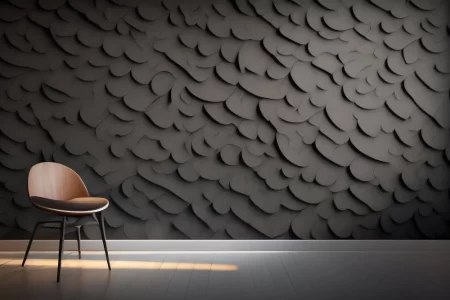 When it comes to creating a visually captivating and inviting living space, there’s a design element that often goes underestimated – textures.
When it comes to creating a visually captivating and inviting living space, there’s a design element that often goes underestimated – textures.
The artful use of textures in interior design can transform a room from ordinary to extraordinary, adding depth, warmth, and personality.
Let’s explore the power of textures and how you can integrate them into your interior design to create a truly remarkable space.
1. Layering for Depth and Dimension
Texturing is about more than just visual appeal; it engages our senses, evoking feelings of comfort and coziness. The layering of different textures – think plush rugs, smooth marble countertops, and rough-hewn wooden furniture – brings a multidimensional aspect to a room.
This layering not only looks luxurious but also adds a tactile richness that encourages interaction with the environment.
2. Creating Visual Interest
Imagine a room filled with plain, smooth surfaces. It might feel sterile and uninspiring. Incorporating textures is like adding brushstrokes to a canvas, creating visual interest and a focal point for the eyes.
A textured accent wall, intricately patterned fabrics, or even a collection of tactile decorative items can capture attention and make a lasting impression.
3. Balancing Aesthetics and Functionality
Textures aren’t solely about aesthetics; they also play a functional role in interior design. Textured surfaces can aid in sound absorption, making a room acoustically comfortable.
For example, heavy curtains, textured wall panels, and upholstered furniture can help reduce noise levels, creating a more serene atmosphere.
4. Warmth and Comfort
In the realm of interior design, textures have the power to imbue a space with a sense of warmth and comfort. The feel of a soft, knitted throw draped over a sofa or the inviting touch of a plush velvet cushion can make a room feel more inviting and livable.
5. Contrast and Balance
Textures can be used to establish a balance between contrasting elements within a room. Combining rough textures with smooth ones or pairing natural textures like stone with luxurious textures like silk. This can create a harmonious equilibrium that’s visually pleasing.
6. Reflecting Personality
Texture choices can reveal a lot about the inhabitants of a space. A rustic wooden dining table may indicate a love for nature, while a room adorned with sleek metallic accents might suggest a preference for modern aesthetics.
By selecting textures that resonate with your personality, you can infuse your living space with a unique character.
Picture Credit: Freepik



